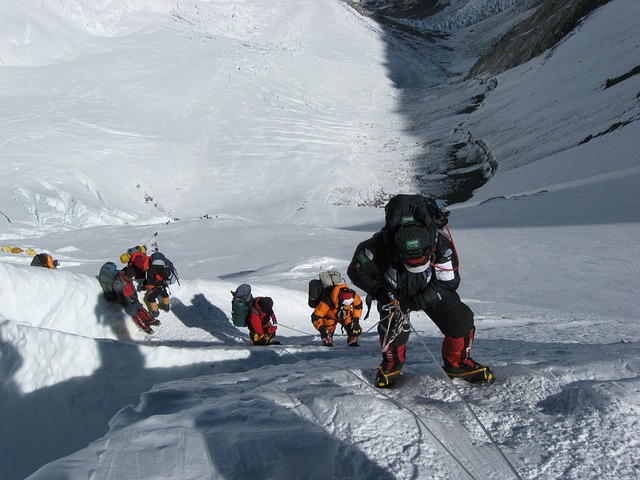Mount Everest is the most famous mountain in the world and highest of any peak. Everest has a rich mountaineering history. Since the early 1900s, adventurers have been attempting to reach its summit. As these facts about Mount Everest will show, not all who brave these slopes are successful!
This is a quick and fun list of 13 interesting Mount Everest facts. Some you may have heard before, others will probably surprise you. How much do you really know about this giant of the Himalayan mountains?
13 Fun Facts About Mount Everest
1. Mt Everest Is Over 6O Million Years Old
The Himalayan mountain range and Mount Everest formed over 60 million years ago. This was the result of two continental plates colliding The Eurasian plate and Indo-Australian plate pressed into each and their boundaries pushed up into this famous Asian mountain range. As far as geological formations go, 60 million years is relatively young.
These plates continue to move and lift upward and the Tibetan Plateau is actually still rising by about 5-10mm each year. This means that Mt Everest is still growing, albeit very slowly.
2. Mount Everest Isn’t Technically The Tallest Mountain In The World
If we measure height above sea level, Mt Everest is indisputably the champion at 8,849m/ 29,000ft. However, if we look at actual size measurements from base to peak, Mauna Kea is much taller at 10,210m/ 33,500ft.
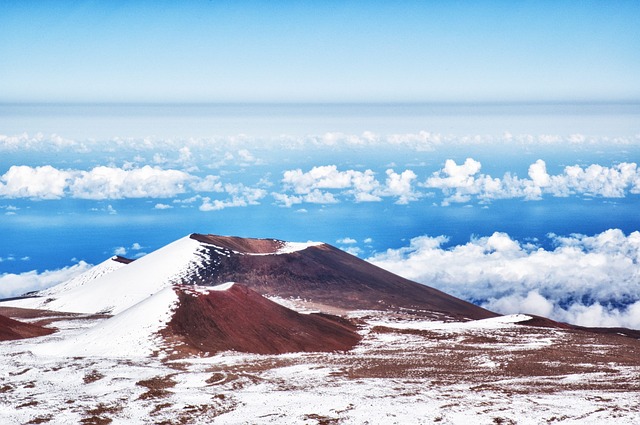
Volcanic summit of Mauna Kea, Hawaii
However, most of Mauna Kea is below sea level with only 4,205m sticking out above the ocean. Until someone (or something) manages to haul it out, Everest can rest easy as the title holder for World’s highest Mountain.
3. We’re All Pronouncing ‘Everest’ Wrong
Let me start by mentioning that Nepal locals call the mountain Sagarmartha, meaning Sky Goddess in Nepali. The Tibetans called it Chomolungma (Goddess Mother Of Mountains). The name Chomolungma had been published on maps in Paris as early as 1733.
Andrew Waugh (the British Surveyor General of India) proposed the name ‘Everest’ in 1965 when the Mountain was first introduced to the West. This was in honor of his predecessor, George Everest whose surname is actually pronounced EVE-rest not EVER-rest.
To be fair, George Everest did not actually want the mountain named after him. He said it was important to use the local names.
4. The First Person To Climb Mount Everest
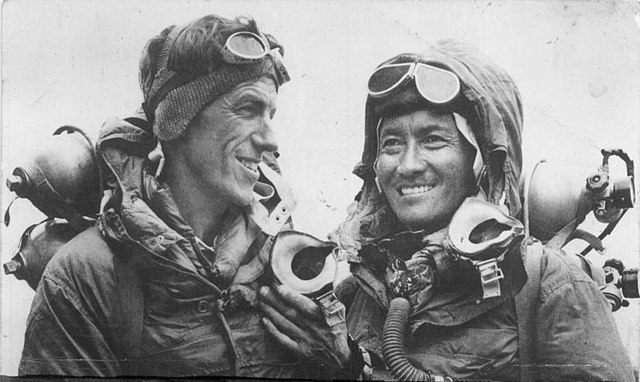
Edmund Hilary and Tenzing Norgay (Photo courtesy of Jamling Tenzing Norgay On Wikimedia Commons)
The summit success story of Sir Edmund Hilary (from New Zealand) and Tenzing Norgay ( a local Sherpa) is one of the most famous in mountaineering history. The pair were part of a 400-man British expedition lead by John Hunt. Hilary and Tenzing (33 and 38, respectively, at the time) reached Everest’s 29, 035ft peak on 29 May 1953 just before midday.
Prior to the 1953 expedition, there had been about ten failed major expeditions on Everest. Tenzing had already attempted a climb in 1952 but the team was turned back by dangerous weather conditions. Hilary had completed 3 Himalayan expeditions in the previous two years.
Note: some historians believe that Hilary and Tenzing were not the first to reach Mt Everest’s summit. In 1924 George Mallory and Andrew Irvine made an attempt. They were last seen close to the summit on July 8th. No one is sure whether they reached the top before perishing somewhere on the slopes.
See these amazing pictures of George Mallory's 1924 expedition.
5. First Woman To Climb Mount Everest
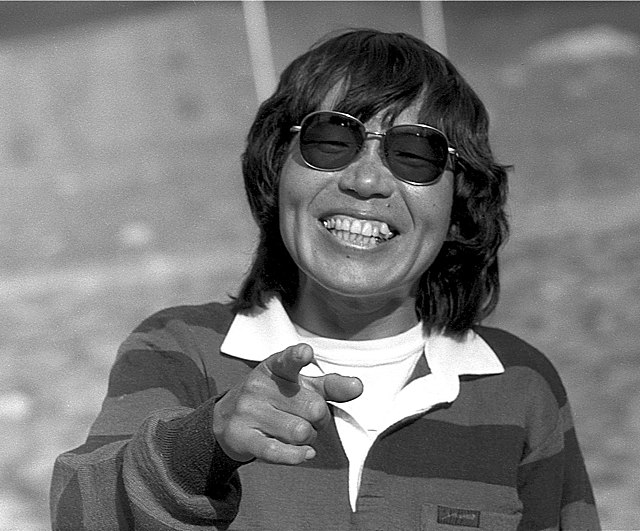
Junko Tabei (photo courtesy of Jaan Kunnap on Wikimedia Commons)
On 16 May 1975, Junko Tabei (36) from Japan became the first woman to summit Mt Everest. Tabei was a strong advocate for female climbers and had formed a woman’s mountaineering club in Japan in 1969, pretty radical for its time! It was within this club that a 15-woman team was formed to tackle Mount Everest. The Japanese Woman’s Everest Expedition (JWEE) was lead by Eiko Hisano.
Although she managed to secure some funding from news agencies, Tabei saved money by making climbing gloves and pants herself. Tabei went on to become the first woman to climb all seven summits.
6. First Person To Climb Mount Everest Without Oxygen
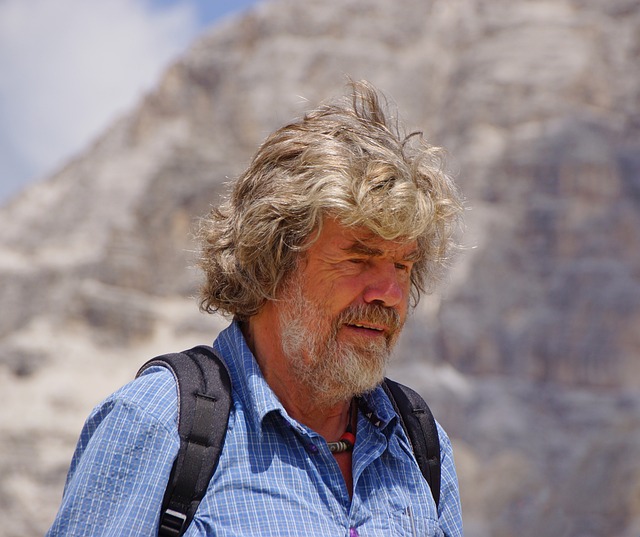
Reinhold Messner
Reinhold Messner (Italy) and Peter Habeler (Austria) were the first people to summit Mt Everest without supplementary oxygen. They made their climb on 8 May 1978, before this, it was believed to be an impossible feat. Messner is also famous as the first person to have climbed all fourteen 8,000ers. He achieved this in October 1986.
See our expert guide to climbing Mount Everest.
7. First Disabled Person To Climb Mount Everest
Tom Whittaker, a New Yorker became the first disabled person to reach Mt Everest’s summit in 1998. Whittaker, an avid mountaineer, had lost his right foot after a car accident in 1979. This didn’t stop him from pursuing his climbing career. After regaining his strength, he made two attempts on Everest before making it to the top on 27 May 1998. He was 50 years old at the time.
8. First American To Climb Mount Everest
James (Jim) Whittaker became the first American to reach the summit of Mount Everest on 1 May 1963. Whittaker was part of an American expedition. The team was lead by Norman Dyhrenfurth and Nawang Gombu, nephew of famous sherpa Tenzing Norgay. Gombu went on to set his own record by becoming the first person to summit Everest twice (the second time in 1965)
9. The Fastest Everest Climb
The record for the fastest ascent to the summit of Mount Everest is held by expert Sherpa Lakpa Gelu. On his tenth Everest climb. Gelu reached the top in an amazing 10hrs and 56 minutes. He made this climb between the late afternoon of May 25th and early hours of May 26th 2003.
10. Youngest Person To Have Climbed Mount Everest
Jordan Romero, an American born in 1996, is the youngest person to have reached the top of Mt. Everest. He climbed the famous peak with his dad, stepmom and three Sherpas on 22 May 2010 when he was only 13 years old.
In 2012, Jordan went on to become the youngest person to complete the seven summits.
The youngest woman to have climbed Mount Everest was Ming Kipa from Nepal.
She reached the summit on May 22, 2003 when she was only 15 years old. Ming held the record as the youngest person to climb Everest for 7 years until Jordan’s climb.
11. Who Has The Most Summits Of Mount Everest
It’s no surprise that the person who has reached the top of Mount Everest on the most occasions is a Sherpa. Kami Rita Sherpa (born January 1970) has reached the Mt Everest summit no less than 26 times. He first reached the peak back in 1994 and his most recent Everest ascent was May 2022.
Kami Rita also holds the world record for the most summits of 8,000m peaks. Other than Everest, he has climbed Cho-Oyu (8 times), Manaslu (3 times), Lhotse and K2 (once each).
12. How Many People Have Climbed Mount Everest?
By the end of 2022, Everest had been successfully summited about 11,300 times by 6000 different people. Some climbers (especially Sherpas) make the climb several times in their lives. These stats are according to the Himalayan Database.
This number would actually be much higher if it wasn't so expensive to climb Mount Everest.
13. Climbing Mount Everest Death Rate
If you are wondering how many people have died climbing Mount Everest, the answer is unfortunately a lot! Over 300 people have died whilst attempting to summit the world’s highest mountain. This is more deaths than on any other 8000er.
The most recent official Everest Death toll (2022) was at 310. Every year this rises slightly higher. About two-thirds of the bodies have never been recovered from the mountain. That means there are about 200 corpses buried on Mount Everest! Some climbers were never found and other bodies are impossible to safely retrieve.
Mount Everest is not actually the most dangerous 8000er, that accolade belongs to Annapurna and is followed closely by K2. In fact, when you compare the number of deaths to the number of attempts, Mount Everest’s death rate is only about 1%.

